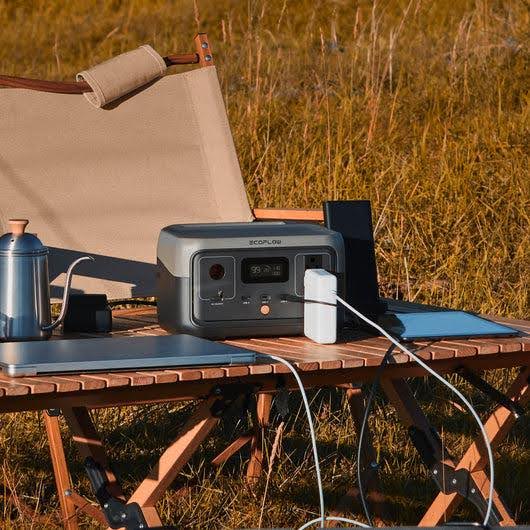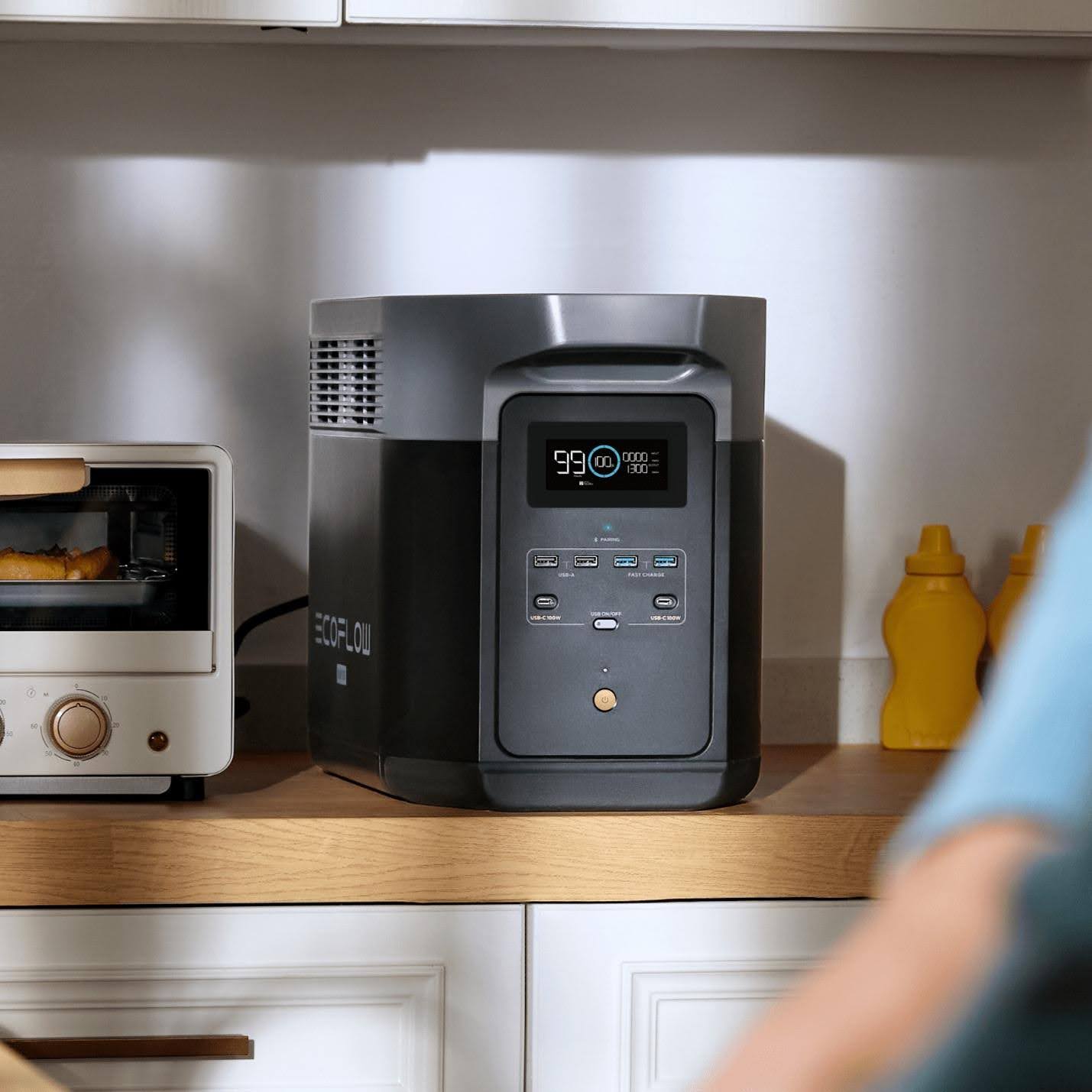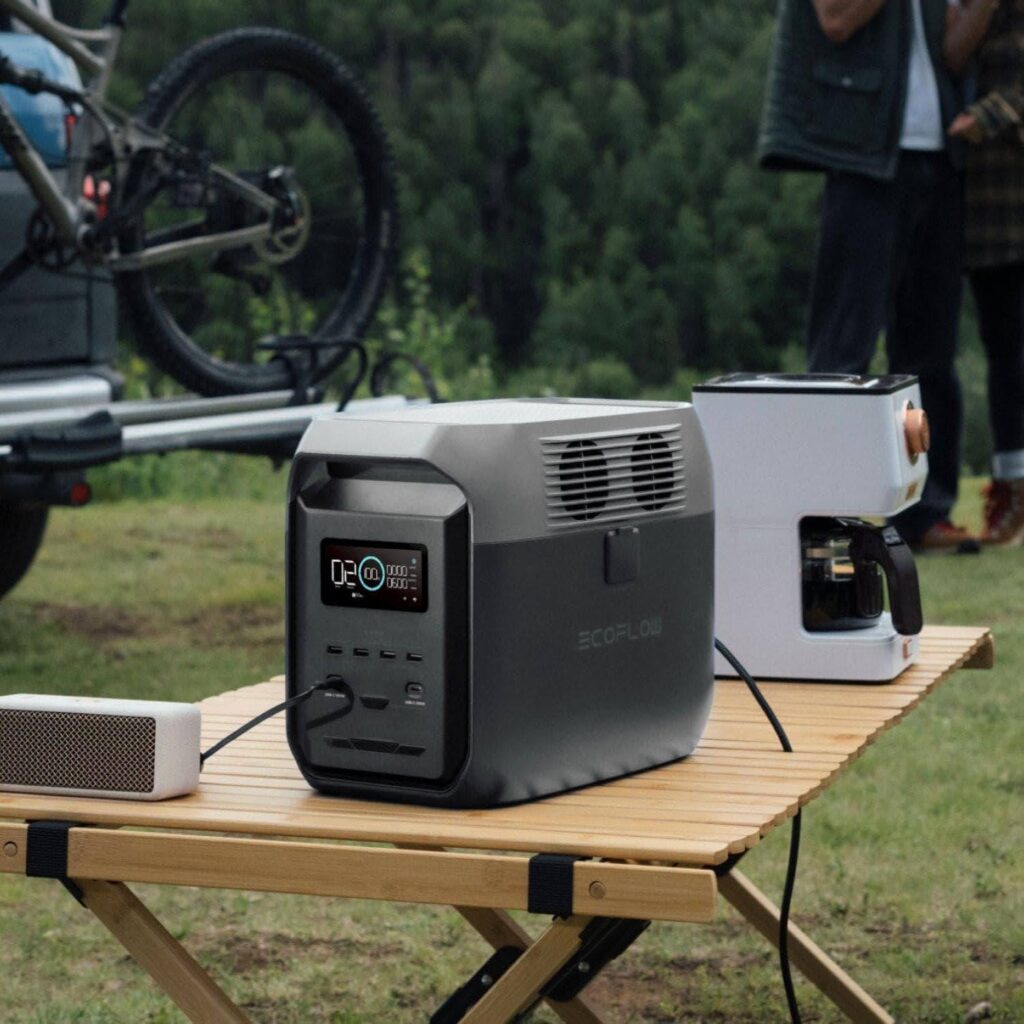As those of us become more and more reliant on portable power sources for everything from weekend camping trips to emergency readiness, the safety of these power storage devices is more important than ever. Portable power stations provide convenience and reliability that few of us could have imagined just a few decades ago, but they also carry the threat of thermal runaway, an event in which an increasing amount of energy is added to a system until it breaks down.
This pressing safety concern affects not just the longevity of your investment but, more importantly, poses significant risks to user safety. Understanding and preventing thermal runaway is essential as these devices become more powerful and energy-dense. Recent incidents involving battery fires and explosions have highlighted the urgent need for better safety awareness and prevention strategies.
This comprehensive guide explores the technical aspects of thermal runaway prevention, focusing on practical solutions and evaluation methods that help users make informed decisions. By understanding the underlying mechanisms and implementing proper safety measures, we can harness the full potential of portable power technology while maintaining optimal safety standards.
Understanding Thermal Runaway in Portable Power Stations
Thermal runaway is a state in which a battery rapidly enters a self-heating cycle that cannot be controlled and can result in flame or explosion. Often, the dangerous sequence begins when a cell within the battery gets too hot and sets off a series of chemical reactions that produce more heat. Physical damage, among other reasons, is responsible in some instances while in other cases it may be due to a manufacturing fault, overcharge or being in an extremely high or low temperature environment in the case of portable power stations.
The chemical process includes the decomposition of the electrolyte and electrode materials of the battery. When internal temperatures exceed certain levels (normally about 60-80°C), the separator between positive and negative electrodes can melt, leading to a direct short-circuit which results in catastrophic failure of the cell. This produces a vicious circle, where increasing current flow induces yet more heat to break down more.
In the real world, thermal runaway has led to violent cell rupture, toxic gas release and the rapid spread of fire from cell to cell. These have resulted in property damage, bodily injury, and recalls throughout the industry. In order to prevent such risks, manufacturers have to comply with strict safety testing such as UL 1642 for lithium batteries and IEC 62133 for portable devices. These certifications involve rigorous testing for short circuit protection, and the resistance to overcharging and high temperatures under different conditions. All users should ensure that their portable power stations have these critical safety certifications before making a purchase.
Battery Storage Capacity: Balancing Power and Safety
Capacity vs. Stability Tradeoffs
With the mobile power plants of today, on the other hand, the high energy density creates a high fence that perfectly balances safety and performance. With increasing capacities, heat becomes applicable, thus makes heat dissipation more and more complex. In order to have better stability, battery manufacturers only make sure single cell capacity not over 3000mAh to 5000mAh, but not 10000mAh per single cell, so a 10000mAh, 15000mAh, 25000mAh, 30000mAh battery pack is of 3 to 10 strips and then make them in parallel. In this way, the safe temperature range is provided for operation with the required power output.

Technical Evaluation Criteria
When comparing portable power stations, there are a few important specifications you’ll want to pay attention to. Thermal stability is dramatically influenced by battery cell chemistry type, LiFePO4 cells being even more thermally stable than standard lithium ion. And, in addition to the temperature sensors, smart fans allow for necessary heat dissipation. Leading brands, such as EcoFlow, have integrated sophisticated Battery Management Systems (BMS) with numerous temperature checking locations and auto-power off function. Devices having individual heat dissipation channels between cells and thermal insulation are to be preferred as they significantly reduce risks of thermal runaway.
Innovations in Battery Safety
Leading-edge battery safety technologies: advanced BMS now include complex monitoring algorithms to monitor a variety of parameters simultaneously. Such systems typically employ distributed temperature sensors, voltage monitors and current limiters to form an overall safety system. The BMS manages the charge and output characteristics of the power supply by constantly monitoring real time data and automatically compensating for any deviation.
Multi-layer TPP is a critical advance in the safety design of batteries. These systems integrate physical barriers such as ceramic-coated separators or flame retardant materials with active cooling solutions. Smart fan system features greater thermal performance and reduced noise temperatures, automatically adjusting to the changing temperature of the designated area with the option to turn the fan off. The inter-cell isolation structure prevents the heat transfer, therefore limits any possible failure to the single unit.

Under the most demanding circumstances, these safety advances have proved remarkably resistant. Even in stress tests, conducted between -20 and 45 Degrees Celsius, today’s power stations are still running smoothly, while conventional designs show great performance losses. The incorporation of redundant safety circuits and fail safe devices, if one protection layer meets failure, the other protection layers can prevent the impact of cascade failures. Combined, this multi-level-of-protection model has led to a >90% reduction in heat incident rates when compared to typical power plant design and is now the new standard for safe power on the go.
Optimizing Energy Consumption for Safety
Effective load management plays a crucial role in preventing thermal stress on battery systems. By distributing power demands evenly across available cells, modern power stations minimize localized heat buildup. Smart charging algorithms automatically adjust power delivery based on connected devices, preventing sudden current surges that could trigger thermal events. When multiple high-draw devices are connected, the system intelligently sequences their power allocation to maintain safe operating temperatures.
It is much safer with advanced power distribution as the loads are balanced automatically. The system actively identifies the usage of each outlet and moves power on-the-fly as any of the ports nears the highest thermal limits. This fine tuning avoids too much loading in any single part. The charging rates vary based on environmental conditions, with an automatic reduction in power delivery when it gets too hot, yet still powers the device with key functions.
Worry-free safety thanks to real-time energy monitoring within the integrated display panel and mobile apps. These devices monitor the temperature of the battery, the state of charging and the performance of the battery. Color-coded warnings indicate when users may be at risk for an impending thermal problem, while detailed power flow visualizations assist in pinpointing and correcting inefficient usage patterns which could lead to a buildup of heat. With this complete control over power, users can minimize power consumption while preserving optimal safety margins.
Step-by-Step Guide to Avoiding Thermal Runaway
Selecting Safe Battery Products
In addition to UL 2743 certification, look for high-level thermal management technologies when considering portable power stations. Opt for LiFePO4 battery chemistry, which boasts better thermal management. Check the battery management system has at least two temperature sensors and the protection circuit is automatic. Ensure adequate thermal design and heat dissipation with cooling channels and qualified TIM.
Operational Best Practices
Keep your power station in optimal operating order by storing it in temperatures ranging 0-40°C, avoid direct sunlight, and leaving enough space for airflow around the unit when it’s running. It is good to charge big power devices in a way that avoids huge electricity flowing on one port directly by connecting it to other ports. Don’t go above the manufacturer’s recommended maximum continuous output; also give it a break, don’t run this particular machine all day every day.
Maintenance and Monitoring
You should occasionally check for physical damage or deformation of your Power Station especially after delivery or in the wake of a blow. For the firmware, always make sure you have the latest updates and security measures from the official source. Keep tabs on the health of the battery through manufacturer apps or an integrated display, and be on the lookout for any strange temperature spikes or charging habits.

Set up a maintenance plan involving monthly deep discharge cycles to calibrate battery management systems and validate thermal protection capabilities. If abnormal heating is noticed during use, turn off the load and allow the system to cool in a well-ventilated location.
Future of Safe Battery Technology
With the advancement of portable power technology, thermal runaway has been the basis of safety design of large capacity batteries. As we have seen, it is important to familiarize oneself with the technical knowledge around battery management systems, thermal protection features and safe user behavior in order to ensure that power solutions are safe and reliable. The inclusion of some smart safety features, sophisticated BMS algorithms, and multi-layer protection systems has dramatically diminished the thermal hazards of modern devices.
For customers purchasing a portable power station, technical knowledge is still the key. Verification of safety certifications, awareness of thermal management capabilities, and adherence to appropriate maintenance practices are key to avoiding thermal hazards. With battery tech continuing its development, we can look forward to ever-more-sophisticated safety measures such as AI-driven thermal prediction and improved cell isolation methods.
Do something now: compare your existing battery storage against the technical laundry list in this guide. Select appliances that focus on safety through certified protection systems and carry out maintenance under the manufacturers’ guidelines. Knowing the facts rather than falling for the marketing hype will guarantee you have the best possible – and SAFEST – portable power on the market.
